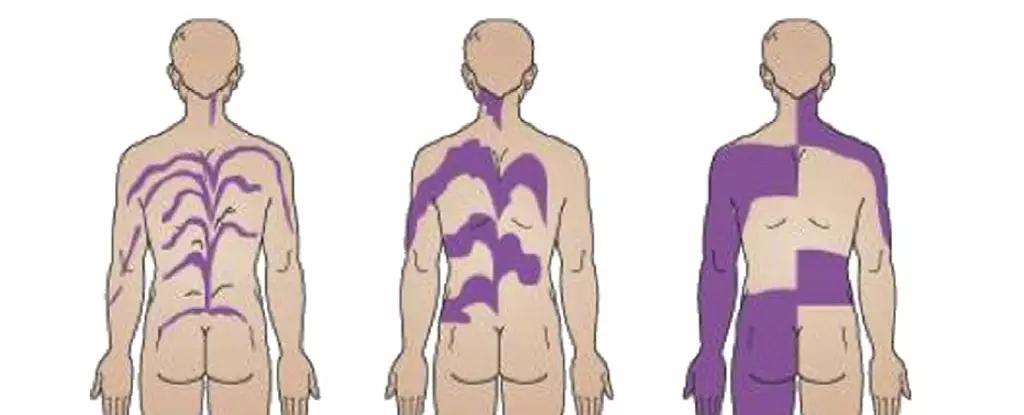Our skin is more than just a protective barrier; it is also a canvas for a unique and intricate pattern that is invisible to the naked eye. These patterns are known as Blaschko lines, and they are believed to trace the paths our cells took during embryonic development to form the skin we have today.
German dermatologist Alfred Blaschko discovered these patterns in the early 20th century, after studying the skin of more than 150 patients. He observed that moles, birthmarks, and other skin conditions followed specific lines across the body that were present from birth and did not correspond to any known bodily system.
Blaschko’s work was expanded upon by physician Rudolph Happle a century later, who added more details to the map, including scalp spirals and neck wriggles. Today, these lines are believed to be created by the paths of keratinocytes and melanocytes during embryonic development.
Melanocytes are responsible for our skin pigment and form in the neural crest of an embryo while it is still just a few hundred cells. During this stage of development, cells in females randomly select which X chromosome to shut off, as they only need one active per cell. Therefore, some embryonic cells will have the X chromosome from the mother, while others have the X chromosome from the father.
This process results in an entire Blaschko line sharing the same version of DNA, whereas the line next to it may have the other X chromosome. This is how some patterns present as lines and others as bigger patches. This patchwork of genetic patterning is called mosaicism and can occur with mutations that happen early in development, not just traits linked to the X chromosome.
While it is not visible in humans due to the complexity of our skin color determination, coat color genes in some animals are exclusively linked to the X chromosome. This is how calico cats have color patches that clearly mark where each of the two different types of cells lie, one group with the mother’s X chromosome and the other with the father’s.
However, mutations involving color-producing cells can lead to pigmentary mosaicism, which can present as streaks and swirls following Blaschko lines in humans. There are different types of pigmentary mosaicism, with type 1a and 1b being the most commonly seen varieties.
Another rare example of mosaicism in humans is chimerism, which occurs when two fertilized eggs merge to form a single individual. This can result in a random combination of two genetically different skin types that often appear as a checkerboard pattern of mosaicism.
Researchers speculate that these lines may explain the way rashes, such as dermatitis from poison ivy, spread. Some common skin conditions, such as eczema and psoriasis, can also follow these patterns. Understanding these patterns can help doctors diagnose skin conditions and provide better treatment options to patients.
Blaschko lines are fascinating patterns that reveal the complexity of our embryonic development and genetic makeup. While they may not be visible to the naked eye, they play a crucial role in understanding various skin conditions.



Leave a Reply